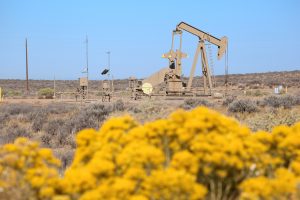 Methane leaks from oil and gas sites represents a problem on many fronts. They create harmful air pollution, contribute to global warming and can even cause explosions. They also result in a lot of wasted gas.
Methane leaks from oil and gas sites represents a problem on many fronts. They create harmful air pollution, contribute to global warming and can even cause explosions. They also result in a lot of wasted gas.
Colorado and New Mexico — two of the nation’s leading energy producers — recently ramped up their methane pollution standards for the oil and gas industry.
Ensure standards apply to smaller, low-producing wells
The vast majority of the nation’s wells produce less than 15 barrels of oil a day and there are often calls for these sites to be exempted from environmental standards. This is a major problem because their footprint is huge and their climate impact adds up.
Small wells, BIG emissions. ICYMI, a new study found low-producing oil and gas wells account for HALF of all methane emissions from wells nationwide. And they only produce about 6% of all US oil and gas! https://t.co/3CK9adNzP4 pic.twitter.com/KuGWgyL0sQ
— EDF (@EnvDefenseFund) April 30, 2022
Thanks to the leadership of Gov. Michelle Lujan Grisham, New Mexico recently implemented new standards that require operators to inspect these smaller well sites for methane leaks at least once a year. It’s a move that was supported by public health groups, environmental organizations, frontline and disproportionately impacted communities and even the oil and gas industry, and sends an incredibly strong message from the nation’s number two oil-producing state that it’s taking pollution and energy waste seriously.
Step up leak inspections across the board
Colorado also recently improved its standards for leak inspections. In 2014, the state became the first in the nation to implement methane standards for oil and gas sites and served as a model that other states have followed. However, Colorado recently moved even further and now requires smaller wells with leak prone equipment to receive regular inspections and — like New Mexico — also requires more routine leak inspections for well sites located in close proximity to homes and schools. Regularly monitoring sites for gas leaks and then fixing any issues is one of the fastest, cheapest climate solutions that exists and it helps improve air quality for the communities who live and work in energy-producing regions.
Lessons from New Mexico and Colorado’s leading methane rules Share on XEliminate routine flaring
Both Colorado and New Mexico have also taken steps to eliminate routine flaring. Flaring or simply burning away gas is a massive waste of energy resources, but recent research has shown it’s also a major source of pollution — particularly when flares malfunction. By taking steps to end this practice, both states are demonstrating a commitment to address climate change and enhance national energy security by reducing waste.
Implement these models nationwide
The Environmental Protection Agency and Bureau of Land Management are both in the process of establishing national standards to respectively limit oil and gas air pollution and methane waste on both public and private lands. Both agencies can incorporate the successful approaches pioneered by Colorado and New Mexico as they craft their proposals.
Comprehensive federal action on methane could not be more timely. The ongoing humanitarian crisis in Ukraine that is roiling global energy markets is making Colorado and New Mexico’s efforts to minimize energy waste look incredibly wise.
The Biden administration has committed to export 50 billion cubic meters of liquified natural gas to Europe, and according to EDF estimates as much as one half of that could be met through establishing strong, sensible federal methane pollution and waste rules. As Europe looks for replacements for Russian natural gas, it is unconscionable that we are wasting these resources.
Stronger methane waste rules applied nationwide can help. As EPA and BLM look to finalize new methane and waste standards in the coming months, they should build upon the strong foundation set by Colorado and New Mexico.









